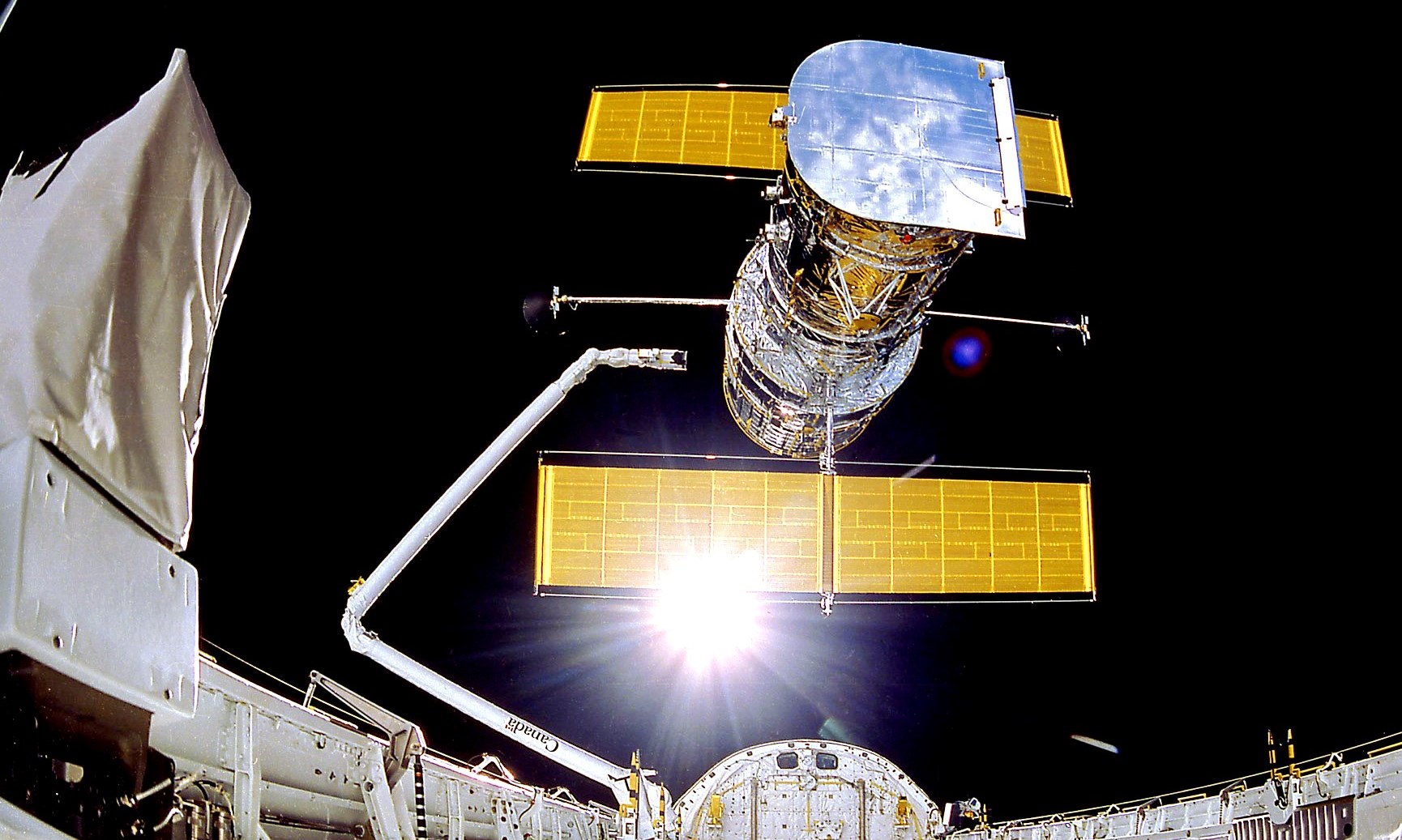The Hubble Space Telescope is facing its most serious glitch in a decade and NASA really wants to fix it
But it isn't the sort of fix that should be rushed.

The venerable Hubble Space Telescope is facing its most serious malfunction in more than a decade, and while NASA is eager to restore the iconic observatory, the agency doesn't want to rush that fix-it process.
On June 13, Hubble unexpectedly stopped doing science work in what mission engineers originally suspected was a case of a memory module gone bad. But the anomaly has turned out to be more slippery than that.
Now, more than three weeks later, NASA's team is still working to pin down precisely what went wrong on the observatory, which astronauts deployed from space shuttle Discovery in 1990 and last repaired in 2009. Although the anomaly has been trickier than originally expected, NASA officials are confident that Hubble has plenty more science up its sleeve.
"Other than the fact that this particular anomaly means the observatory can't work until we solve it, I don't think solving it is different in kind than other anomalies that NASA deals with," Paul Hertz, NASA's director of astrophysics, told Space.com in an interview.
Related: The Hubble Space Telescope and 30 years that transformed our view of the universe
Troubleshooting spacecraft anomalies is always a little tricky, Hertz noted, since engineers can't see or touch the systems and have minimal data about what's happening.
"It's always a bit of a detective exercise to try to use the clues that we have and understand the hardware and what it can and can't do and try to figure out what hypothesized problem could have yielded the data that we see," Hertz said. "The typical way that one troubleshoots an anomaly is you think about all the things that could have gone wrong, you try to order them in order of likeliness, and then you work your way down the list."
Get the Space.com Newsletter
Breaking space news, the latest updates on rocket launches, skywatching events and more!
In the weeks since the anomaly, he said, more than a dozen experts have been working through that list of potential culprits, which spacecraft troubleshooters call the fishbone. At first, the team expected to find the error in Hubble's main computer, but that theory didn't pan out — switching to the backup computer didn't solve the problem. And the tests along the way were generally straightforward to execute.
Now, the fishbone seems to be pointing instead to adjacent systems that interact with the computer, managing its data and power supply. Checking these systems is riskier and more difficult, Hertz said: The engineers must work with more pieces of the system than they have on previous tests, and they must include the spacecraft itself, rather than only the computer.
Related: The best Hubble Space Telescope images of all time!
"To swap them out and swap in the redundant components on the other side would require commanding of the spacecraft, which is riskier because if you do something wrong, you'll leave the spacecraft in an undesirable condition," Hertz said.
Because of the risks involved in the next procedures, NASA has slowed down the troubleshooting process. "We're very deliberately not putting any time pressure on the team," Hertz said. "I told them that the goal is to safely recover Hubble science operations, not to do it quickly."
The team took a break for the long Fourth of July holiday weekend, he said, and is now back to work developing and analyzing procedures to switch to the backup modules of the data and power regulators on the spacecraft. Before any commands are sent to Hubble, the entire plan must be approved by an independent review board and a group of NASA managers, Hertz noted, given the possibility that a small error could put an end to Hubble's science for good.
But while Hertz and the rest of NASA is taking the current anomaly seriously, he said the issue doesn't mean it's time to say goodbye to the beloved observatory quite yet. "We're all aware that Hubble is getting older," Hertz said.
"Parts in space don't fail on schedule, it's a random thing," he added. "It's been 12 years since we serviced Hubble and one thing finally failed. So simplistically, we're going to go another five, 10, 12 years before something else fails, and it'll probably be something which is still redundant and so that won't be the end of the mission then, either."
Email Meghan Bartels at mbartels@space.com or follow her on Twitter @meghanbartels. Follow us on Twitter @Spacedotcom and on Facebook.
Join our Space Forums to keep talking space on the latest missions, night sky and more! And if you have a news tip, correction or comment, let us know at: community@space.com.

Meghan is a senior writer at Space.com and has more than five years' experience as a science journalist based in New York City. She joined Space.com in July 2018, with previous writing published in outlets including Newsweek and Audubon. Meghan earned an MA in science journalism from New York University and a BA in classics from Georgetown University, and in her free time she enjoys reading and visiting museums. Follow her on Twitter at @meghanbartels.









